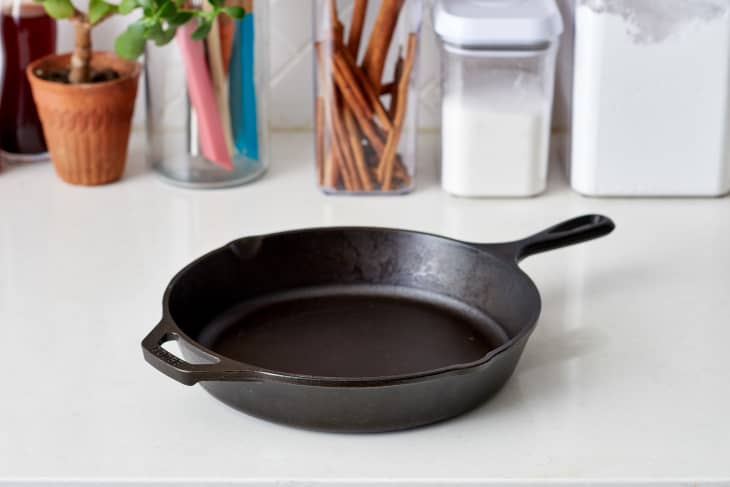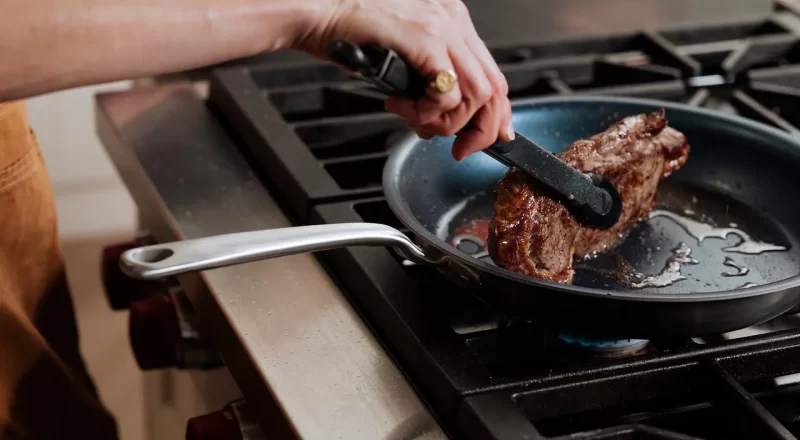Whether you’re a kitchen novice or a seasoned chef, learning ‘how to restore a cast iron skillet‘ can save you time and money. And when done correctly, the results are tremendous.
This article will guide you through every step of the process, ensuring your cast iron skillet remains a staple in your kitchen for years to come.

The Importance of Maintaining Your Cast Iron Skillet
Before diving into the restoration process, it’s crucial to understand why maintaining cast iron skillets is vital.
Why Cast Iron Skillets are Valuable
Cast iron skillets are renowned for their durability and versatility. They can last for decades if properly cared for, and they offer an unparalleled cooking experience.
We’ll also touch on the different uses, tips, and recipes where a well-maintained cast iron skillet shines.

Identify the Problems: Rust, Food Residues, and More
Common Issues with Cast Iron Skillets
The most common problems include rust, food residues, and a damaged seasoning layer. Identifying and understanding these issues is the first step in the restoration process.
Initial Inspection
A thorough examination will help you determine the severity of the wear and tear. Look for rust spots, sticky residues, and uneven surfaces.

Gathering the Necessary Tools and Materials
Materials You’ll Need
Before starting the restoration, gather all necessary materials. This will streamline the process:
- Steel wool or a heavy-duty scrubber
- Coarse salt
- Baking soda
- Neutral oil (like vegetable or canola oil)
- Lint-free cloth
- Soap (biodegradable is preferred)
Tools for the Job
- Soft-bristle brush
- Scraper
- Towel
Steps to Restore Your Cast Iron Skillet
Removing Rust
To remove rust, use steel wool or a heavy-duty scrubber. Scrub the skillet thoroughly until all rust is removed.
For a less abrasive option, consider using a vinegar soak.
Cleaning Food Residues
To clean food residues, sprinkle coarse salt over the affected areas. Use a soft-bristle brush or a scraper to remove stuck-on food.
Seasoning the Skillet
Once cleaned, it’s critical to reseason the skillet. Apply a thin layer of neutral oil over the entire surface and bake it in the oven at 375F for one hour.
Cooling and Storage
Allow the skillet to cool naturally. Once cool, store in a dry place to avoid moisture accumulation.
Consider reading how to store cast ironhere
Preventive Measures to Keep Your Skillet in Good Shape
Regular Maintenance
Regular maintenance is key to extending the life of your skillet. Wipe down after each use, avoid acidic foods, and reseason periodically.
Check out these excellent recipes to cook on your cast iron, such as Chicken Thighs, Chili, and Jalapeno Cheddar Bread.
Avoiding Common Mistakes
Avoid common mistakes such as using harsh chemicals, soaking your skillet in water, or storing it in a damp environment.
FAQs
What’s the Best Oil for Seasoning My Cast Iron Skillet?
Neutral oils like vegetable or canola oil are ideal for seasoning. They create a durable and non-stick surface.
Can I Use Soap to Clean My Skillet?
Yes, but opt for a biodegradable soap and use it sparingly.
How Often Should I Reseason My Skillet?
Season your skillet every few months or as needed based on its appearance and performance.
External Resources
For additional information on caring for your cast iron skillet, visit Food Network.
As an Amazon Associate, I earn from qualifying purchases.

